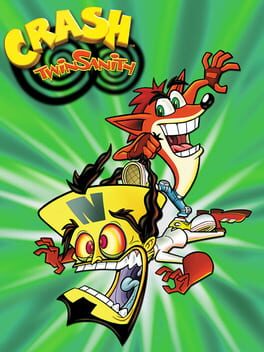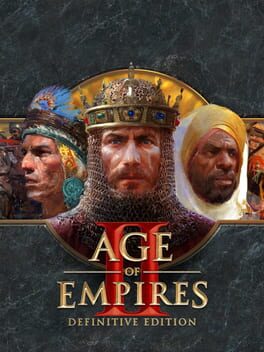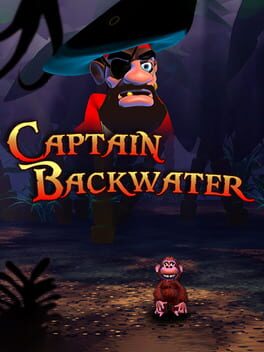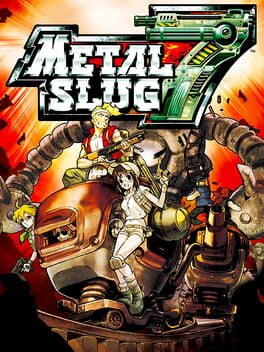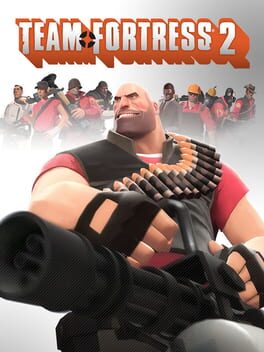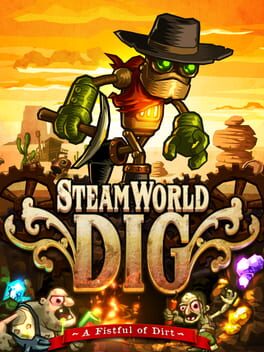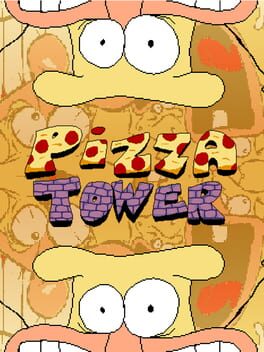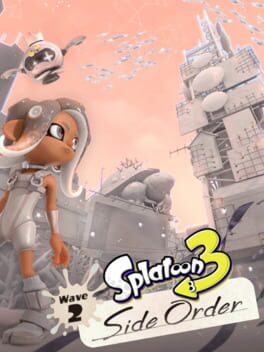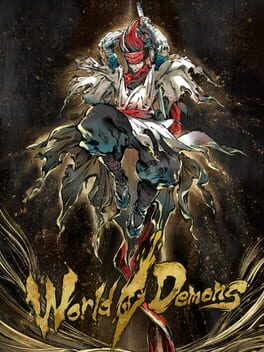Nazo_KG
2004
Twinsanity, when you really look at it, is an unfortunate mishap of exerted ambition that didn't reach its true height.
It's an unfinished game, but what is there, as well as the unearthed cut content, gives you a taste of what could've potentially been; The scaffolding inspires that sense of mystery that makes your imagination run rampantly wild of what could've been in the cards for this game.
And I think partly, that is why I can't help but be fascinated by it.
The more open level design reminiscent of Jak and Daxter, the environments, the tongue-in-cheek writing followed with lively voice acting and the incredible soundtrack by Spiralmouth. The building blocks are all there, and I think given the proper time and effort, could've been a fun and standout Crash game.
The aforementioned soundtrack is one of my favourite video game soundtracks ever made. Spiralmouth hit it out of the park with Twinsanity's OST, which is composed of acapella performances only for most if not all tracks. It is truly unique, especially for a video game ost, and really elevates the settings/scenarios to a whole new level.
The Evil Twins track is probably my favourite, such a goddamn cool piece of music.
Would be happy to see a remake one day that puts all the missing pieces together and completes this title.
Twinsanity, although far from perfect, feels so earnest and brimming with potential...it's hard not to feel like it deserves a second chance.
It's an unfinished game, but what is there, as well as the unearthed cut content, gives you a taste of what could've potentially been; The scaffolding inspires that sense of mystery that makes your imagination run rampantly wild of what could've been in the cards for this game.
And I think partly, that is why I can't help but be fascinated by it.
The more open level design reminiscent of Jak and Daxter, the environments, the tongue-in-cheek writing followed with lively voice acting and the incredible soundtrack by Spiralmouth. The building blocks are all there, and I think given the proper time and effort, could've been a fun and standout Crash game.
The aforementioned soundtrack is one of my favourite video game soundtracks ever made. Spiralmouth hit it out of the park with Twinsanity's OST, which is composed of acapella performances only for most if not all tracks. It is truly unique, especially for a video game ost, and really elevates the settings/scenarios to a whole new level.
The Evil Twins track is probably my favourite, such a goddamn cool piece of music.
Would be happy to see a remake one day that puts all the missing pieces together and completes this title.
Twinsanity, although far from perfect, feels so earnest and brimming with potential...it's hard not to feel like it deserves a second chance.
2015
As unassuming as it seemed to me at first, Yakuza 0 quickly grew on me so much, that it made me mad at myself for not playing it sooner.
The story in this game is on another level entirely, and I enjoyed it so much that I was ravenous and giddy every time I finished a session, and couldn't wait to start the next.
The serious moments and the stupidly funny ones are balanced by the main story keeping a weighty hold on the tone at almost all times, while reserving the lighthearted, ridiculous stories for the side quests, which at times are just so damn stupid but with a lick of humour.
This game distinctly recognises when it needs to keep a poker face, whilst acknowledging its stupendously over-the-top nature at the right intervals. Even the more out of pocket quests never manage to feel out of place or tonedeaf.
The combat is fun, although sometimes it can feel button-mashy if you don't really experiment with combos or upgrade your skill tree that much. It's undeniable, however, that it will never not be funny to grab a bike or vending machine off the side of the road and beat the living daylights out of someone with it (can you tell my favourite is Beast style?).
I struggle to really quantify everything I want to say about this game, because there is SO MUCH to it. The amount of minigames available, things to do and see, and the atmosphere + scope of Yakuza 0 is staggering. It's a 50-ish hour game if you're just doing the story, but you could easily sink over 100 if you want to see everything it has to offer.
The real estate and cabaret side quests feel a bit dragged out, but this is a nitpick and doesn't affect the game overall.
The two protagonists are both so incredibly charismatic and full of personality, it's hard not to become attached to them as you follow their own struggles that, at first glance, seem disconnected.
I loved the dichotomy of Kiryu's image being an intimidating, stoic muscled brute - until the game shows you he's also somewhat shy and reserved, and a kind, gentle soul despite also being able to kick ass when trouble brews.
Majima is none the worse, his embodiment of a wildcard is nothing short of awesome. He's more light on his feet compared to Kiryu's playstyle, which I kinda preferred. His introduction scene in this title is also jaw-droppingly good.
He's such a goofy character that can snap around to being viciously brutal at the drop of a hat, I love it. He's a lot of fun to play as, and to follow along with.
Looking past the protagonists, all the other characters are fantastic too, including the substory characters and the villains.
I loved Nishiki in particular, his interactions with Kiryu and the relationship between the two of them is wholesome, they're real bros.
Another favourite of mine was Kuze, an absolute beast of a man with boundless tenacity.
The soundtrack is rich in quality, quantity, variety and zest!
I'm inclined to say it's one of the best soundtracks I've come across in recent years.
Even the minigames have hype themes for no reason (I'm looking at you, 'Red Radical Rage', 'Beyond the Speed', 'Money Makes Money', 'Trouble Shooting Star' and 'Interplanetary Spark'!!!).
I could keep gushing about this game...honestly, if you haven't played it, you're missing out.
Looking forward to playing Kiwami and onwards..!
The story in this game is on another level entirely, and I enjoyed it so much that I was ravenous and giddy every time I finished a session, and couldn't wait to start the next.
The serious moments and the stupidly funny ones are balanced by the main story keeping a weighty hold on the tone at almost all times, while reserving the lighthearted, ridiculous stories for the side quests, which at times are just so damn stupid but with a lick of humour.
This game distinctly recognises when it needs to keep a poker face, whilst acknowledging its stupendously over-the-top nature at the right intervals. Even the more out of pocket quests never manage to feel out of place or tonedeaf.
The combat is fun, although sometimes it can feel button-mashy if you don't really experiment with combos or upgrade your skill tree that much. It's undeniable, however, that it will never not be funny to grab a bike or vending machine off the side of the road and beat the living daylights out of someone with it (can you tell my favourite is Beast style?).
I struggle to really quantify everything I want to say about this game, because there is SO MUCH to it. The amount of minigames available, things to do and see, and the atmosphere + scope of Yakuza 0 is staggering. It's a 50-ish hour game if you're just doing the story, but you could easily sink over 100 if you want to see everything it has to offer.
The real estate and cabaret side quests feel a bit dragged out, but this is a nitpick and doesn't affect the game overall.
The two protagonists are both so incredibly charismatic and full of personality, it's hard not to become attached to them as you follow their own struggles that, at first glance, seem disconnected.
I loved the dichotomy of Kiryu's image being an intimidating, stoic muscled brute - until the game shows you he's also somewhat shy and reserved, and a kind, gentle soul despite also being able to kick ass when trouble brews.
Majima is none the worse, his embodiment of a wildcard is nothing short of awesome. He's more light on his feet compared to Kiryu's playstyle, which I kinda preferred. His introduction scene in this title is also jaw-droppingly good.
He's such a goofy character that can snap around to being viciously brutal at the drop of a hat, I love it. He's a lot of fun to play as, and to follow along with.
Looking past the protagonists, all the other characters are fantastic too, including the substory characters and the villains.
I loved Nishiki in particular, his interactions with Kiryu and the relationship between the two of them is wholesome, they're real bros.
Another favourite of mine was Kuze, an absolute beast of a man with boundless tenacity.
The soundtrack is rich in quality, quantity, variety and zest!
I'm inclined to say it's one of the best soundtracks I've come across in recent years.
Even the minigames have hype themes for no reason (I'm looking at you, 'Red Radical Rage', 'Beyond the Speed', 'Money Makes Money', 'Trouble Shooting Star' and 'Interplanetary Spark'!!!).
I could keep gushing about this game...honestly, if you haven't played it, you're missing out.
Looking forward to playing Kiwami and onwards..!
Honestly all in all, this feels like the original game elevated to its best form. It looks and sounds great and feels great to play.
And now with the modern release, it's easier than ever to play the grandfather of RTS games with other people.
The only complaint I have with it is the excessive DLC and constantly pushing it in your face. Reminds me a bit of Paradox's practices.
But if you look past that, this is probably AOE II at its best.
And now with the modern release, it's easier than ever to play the grandfather of RTS games with other people.
The only complaint I have with it is the excessive DLC and constantly pushing it in your face. Reminds me a bit of Paradox's practices.
But if you look past that, this is probably AOE II at its best.
2017
2024
Liveleak influencer simulator, pretty much.
Similar to Lethal Company in concept but now you film your teammates getting ripped a new one by the monsters and get famous online.
It's fine, but there isn't that much content in the game which is sort of reflected in the price.
Fun with friends but public lobbies are plagued by hackers and technical issues in general, so keep that in mind.
Similar to Lethal Company in concept but now you film your teammates getting ripped a new one by the monsters and get famous online.
It's fine, but there isn't that much content in the game which is sort of reflected in the price.
Fun with friends but public lobbies are plagued by hackers and technical issues in general, so keep that in mind.
The worse sibling to Wild World, but I couldn't help but fall in love with it, and booting this game up on my CRT to let the soft, calming vibes wash over me is therapeutic.
Somehow, at least for me, City Folk inspires that decadent feeling from older games better than WW, it's like you're locked inside a bittersweet, lonely time bubble when you sit down to play it and get immersed.
It was the first AC game I played so maybe a little bit of that is the rose-tinted glasses, but the music, the homely small town you're set into, staying up in the night exploring, the friends that shape your town - it was a great experience.
New Leaf takes the crown as the best AC game imo, with the amount of content it has and what you can do in that game, so City Folk pales in comparison. But if you haven't played an AC game before and have a Wii lying around, this isn't a bad pick at all.
Somehow, at least for me, City Folk inspires that decadent feeling from older games better than WW, it's like you're locked inside a bittersweet, lonely time bubble when you sit down to play it and get immersed.
It was the first AC game I played so maybe a little bit of that is the rose-tinted glasses, but the music, the homely small town you're set into, staying up in the night exploring, the friends that shape your town - it was a great experience.
New Leaf takes the crown as the best AC game imo, with the amount of content it has and what you can do in that game, so City Folk pales in comparison. But if you haven't played an AC game before and have a Wii lying around, this isn't a bad pick at all.
2008
2007
2013
Although vastly superseded by its sequel, the first Steamworld Dig is still by all means a great game, worth revisiting today if you want to see the roots of Steamworld Dig, and the context to the 2nd game's story.
SD opens up in a small, cozy setting in a backwater western town called Tumbleton, and while the writing doesn't play a massive role in the grand scheme of things, I still enjoyed the setting a lot and whatever small ragtag group of characters were present, both in design and personality. It gave the shopekeeper npcs something to be remembered by.
The whole steampunk aesthetic coupled with the decadent approach to character/environment design is very charming as well as inviting, and along with the modest but atmospheric soundtrack, I couldn't help but be engaged with this game on that level despite its flaws.
The gameplay itself feels satisfying and the overall loop is addicting, even though the loop is never expanded upon, which is one of my few criticisms of this title.
More on that, SD1 is certainly not perfect; Fighting enemies is more times than not a fruitless endeavor, combat in general is frustrating and somewhat feels like an afterthought. In fact, it's probably better to ignore the enemies if you can.
The randomly generated digging space is a cool idea but can sometimes lead to weird spikes in difficulty or awkward spaces that you have to navigate through. Once, one of the wall laser enemies spawned inside of the invincible eye laser enemy...a bit strange but I guess it can happen.
With how this game is designed, I kept wondering as I was playing if it'd be possible to hardlock yourself, considering the finite resources and how said resources are necessary to progress through the game, as well as the fact that blocks that you destroy do not regenerate (with a small "but" later in the game).
There are two types of upgrades in SD1, the type you unlock by completing hand-crafted dungeons you find by digging (which are actually pretty good for the most part), and the type that you purchase with resources you find underground.
The upgrades that you can buy with the resources you collect are kind of dull, and don't offer anything exciting, it's just "oh here's an upgrade so you can dig 1 block faster", it's the lazy way to do upgrades and felt exhausted with these by the 2/3rd of the game.
To add to my criticisms, I do think the addition of boss fights would've regulated out at least some of the tedium that comes across with progression in SD1.
A lot of these problems are fixed in the sequel, SD2, which might render this entry obsolete for many people.
But I don't know, I can't help but feel enamoured by this sweet little indie game with a charming vision.
I played it first on the 3DS and didn't get very far, but thought the art direction was cool, and I'm glad I revisited it on the Switch.
It was a very fun (and sometimes frustrating) 8 hours I managed to get out of it, so if you have a weekend to spare and haven't played the 2nd game, I definitely recommend giving this a go. Especially if you're a fan of either Spelunky, Dig Dug, or love Metroidvanias.
SD opens up in a small, cozy setting in a backwater western town called Tumbleton, and while the writing doesn't play a massive role in the grand scheme of things, I still enjoyed the setting a lot and whatever small ragtag group of characters were present, both in design and personality. It gave the shopekeeper npcs something to be remembered by.
The whole steampunk aesthetic coupled with the decadent approach to character/environment design is very charming as well as inviting, and along with the modest but atmospheric soundtrack, I couldn't help but be engaged with this game on that level despite its flaws.
The gameplay itself feels satisfying and the overall loop is addicting, even though the loop is never expanded upon, which is one of my few criticisms of this title.
More on that, SD1 is certainly not perfect; Fighting enemies is more times than not a fruitless endeavor, combat in general is frustrating and somewhat feels like an afterthought. In fact, it's probably better to ignore the enemies if you can.
The randomly generated digging space is a cool idea but can sometimes lead to weird spikes in difficulty or awkward spaces that you have to navigate through. Once, one of the wall laser enemies spawned inside of the invincible eye laser enemy...a bit strange but I guess it can happen.
With how this game is designed, I kept wondering as I was playing if it'd be possible to hardlock yourself, considering the finite resources and how said resources are necessary to progress through the game, as well as the fact that blocks that you destroy do not regenerate (with a small "but" later in the game).
There are two types of upgrades in SD1, the type you unlock by completing hand-crafted dungeons you find by digging (which are actually pretty good for the most part), and the type that you purchase with resources you find underground.
The upgrades that you can buy with the resources you collect are kind of dull, and don't offer anything exciting, it's just "oh here's an upgrade so you can dig 1 block faster", it's the lazy way to do upgrades and felt exhausted with these by the 2/3rd of the game.
To add to my criticisms, I do think the addition of boss fights would've regulated out at least some of the tedium that comes across with progression in SD1.
A lot of these problems are fixed in the sequel, SD2, which might render this entry obsolete for many people.
But I don't know, I can't help but feel enamoured by this sweet little indie game with a charming vision.
I played it first on the 3DS and didn't get very far, but thought the art direction was cool, and I'm glad I revisited it on the Switch.
It was a very fun (and sometimes frustrating) 8 hours I managed to get out of it, so if you have a weekend to spare and haven't played the 2nd game, I definitely recommend giving this a go. Especially if you're a fan of either Spelunky, Dig Dug, or love Metroidvanias.
This review contains spoilers
This figurative side dish to Pizza Tower featuring everyone's favourite lunatic donning yellow could've arrived in the form of a humble reskin...but it is so much more than that.
As phrased by the devs as a pseudo new game+, going through the Tower is relatively the same; the levels are the same, the bosses are the same, the collectibles are still the same.
Instead, where the real grooves start to show is in the brand new playable character itself - the public menace, the Noise - and how he shapes the game's foundations around himself rather than the other way around.
In comparison to Peppino, he's a lot more slippery and frantic, but with an emphasis on vertical/aerial movement, which both suits his personality as a character while building upon the basic moveset you've been given in the base game and twisting it into something that feels fresh and fun to play.
You can chain together some truly insane movements to almost fly through some sections.
There is a good amount of levels that include small gameplay changes that, at times, make them feel like refreshed or alternative versions of those levels; But what is really cool is that all of these changes, in one way or another, always serve to emphasize and showcase the Noise's personality.
Behind the deceivingly goofy and clumsy facade, he's an absolute belligerent asshole with an inflated ego, a taste for mischief...and disregard for honour or dignity towards anyone that stands in his way.
He yawns whenever anyone tries to be intimidating, and disrespects everyone around him any chance he gets.
In boss fights, he throws bombs from a distance instead of fists. He cheats in Vigilante's duel, scares Fake Pep in the chase sequence, and literally nukes Pizzahead in the final brawl atop the Tower.
He is simply a selfish, crazed maniac that flips like a switch between silly, endearing frolicking and psychotic outbursts.
Even The Crumbling Tower of Pizza goes on to cement this in stone by relaying the crescendo of the finale into a dramatic, guns ablazing power fantasy trip down the tower.
Whereas originally you escape with all the characters you met along the way in a triumphant, upbeat stride that I can only describe as being ecstatically accented by the song 'Bye Bye There!', the Noise's escape is a callous breakbeat of a slipaway; Led by somber, beckoning guitar wails and 80s synths duets (capstoned with a delightful Pizza Mayhem leitmotif), you only escape with three of your pals (Noisette, Noisey and the bucket - YES, A BUCKET) while kicking everyone else off the track.
My one complaint about this DLC is something that could very well be a nitpick, but I was disappointed by the Doise bossfight since I genuinely thought they'd reverse the roles and we'd get to fight Peppino.
The story behind the Doise is neat, but, I just think Pep would've been a really cool bossfight with a new moveset that we as the players are familiar with, but in different perspective mirrored at us.
Despite my complaint, it's very obvious even from the outset that a huge amount of effort went into this DLC even though it's completely free, and once again speaks to the love and care that the devs have towards this game.
Frankly I have nothing but respect for the devs, my hat goes off to them.
Looking forward to seeing where they go next in their creative pursuits.
As phrased by the devs as a pseudo new game+, going through the Tower is relatively the same; the levels are the same, the bosses are the same, the collectibles are still the same.
Instead, where the real grooves start to show is in the brand new playable character itself - the public menace, the Noise - and how he shapes the game's foundations around himself rather than the other way around.
In comparison to Peppino, he's a lot more slippery and frantic, but with an emphasis on vertical/aerial movement, which both suits his personality as a character while building upon the basic moveset you've been given in the base game and twisting it into something that feels fresh and fun to play.
You can chain together some truly insane movements to almost fly through some sections.
There is a good amount of levels that include small gameplay changes that, at times, make them feel like refreshed or alternative versions of those levels; But what is really cool is that all of these changes, in one way or another, always serve to emphasize and showcase the Noise's personality.
Behind the deceivingly goofy and clumsy facade, he's an absolute belligerent asshole with an inflated ego, a taste for mischief...and disregard for honour or dignity towards anyone that stands in his way.
He yawns whenever anyone tries to be intimidating, and disrespects everyone around him any chance he gets.
In boss fights, he throws bombs from a distance instead of fists. He cheats in Vigilante's duel, scares Fake Pep in the chase sequence, and literally nukes Pizzahead in the final brawl atop the Tower.
He is simply a selfish, crazed maniac that flips like a switch between silly, endearing frolicking and psychotic outbursts.
Even The Crumbling Tower of Pizza goes on to cement this in stone by relaying the crescendo of the finale into a dramatic, guns ablazing power fantasy trip down the tower.
Whereas originally you escape with all the characters you met along the way in a triumphant, upbeat stride that I can only describe as being ecstatically accented by the song 'Bye Bye There!', the Noise's escape is a callous breakbeat of a slipaway; Led by somber, beckoning guitar wails and 80s synths duets (capstoned with a delightful Pizza Mayhem leitmotif), you only escape with three of your pals (Noisette, Noisey and the bucket - YES, A BUCKET) while kicking everyone else off the track.
My one complaint about this DLC is something that could very well be a nitpick, but I was disappointed by the Doise bossfight since I genuinely thought they'd reverse the roles and we'd get to fight Peppino.
The story behind the Doise is neat, but, I just think Pep would've been a really cool bossfight with a new moveset that we as the players are familiar with, but in different perspective mirrored at us.
Despite my complaint, it's very obvious even from the outset that a huge amount of effort went into this DLC even though it's completely free, and once again speaks to the love and care that the devs have towards this game.
Frankly I have nothing but respect for the devs, my hat goes off to them.
Looking forward to seeing where they go next in their creative pursuits.
This review contains spoilers
All around, Side Order seems to be a fine enough entry to the Splatoon series as a smaller campaign DLC, but Octo Expansion has left very, very big shoes to fill. So much so, that the main campaign of S3 tried to imitate its gameplay formula in adoration.
In comparison to it, Side Order feels like a half-baked but earnest attempt at something different.
I was excited going into this, as I am a huge fan of the roguelike/roguelite genre, and likewise as a fan of those, Side Order disappointed me.
There is very little variety in the way of gameplay missions, and each run feels mostly the same; it's a problem a lot of games like this struggle with, along with carrying a story, but in recent times we have seen games that break through this barrier and go above and beyond this limiting design.
In more recent memory, Hades has surprised everyone with its brilliant gameplay fused together with its lovingly crafted story flawlessly interwoven into its very core; it's a masterful execution, and one that people will be sure to remember for years to come.
With Side Order, the story here starts out promising and is left being drip-fed throughout the elevator scenes, where characters interact. It's nice, but at the end of the day, nothing substantial. There are very little cutscenes too.
The narrative takes a nose dive once the villain, Smollusk, is introduced masquerading as "Order". He turns out to be nothing more than a nuisance in the end, rather than a real threat, which feels baffling and tone deaf considering how the character was represented earlier before we saw anything of it.
Most of the post-game story (that is, after completing your 1st run) is handed to you in the form of blog entries, including the "true ending" that can be obtained by completing the Spire with all palettes.
I was sad to find out there wasn't even a cutscene or secret boss fight waiting for me.
Side Order is very by-the-book in terms of gameplay, the main appeal here is really the novelty of it being Splatoon-themed.
I do appreciate the inclusion of variables that make the challenges harder or give you a bonus, however.
Although, overall, if you've ever played a roguelike/roguelite before, this will feel very basic.
I do think somewhere in here, there's a good concept that hasn't been properly fleshed out, and kind of feels like it was trimmed down in development to something more "doable".
Despite that, I do commend them for trying something new, and Pearl and Marina are a joy to behold whenever they're on the screen.
The visuals are great, even though the clinical off-white design of the inside of the Spire gets stale after a while. I like the design of the final boss, too.
It's not a bad time, by any means. I just wish it was better.
In comparison to it, Side Order feels like a half-baked but earnest attempt at something different.
I was excited going into this, as I am a huge fan of the roguelike/roguelite genre, and likewise as a fan of those, Side Order disappointed me.
There is very little variety in the way of gameplay missions, and each run feels mostly the same; it's a problem a lot of games like this struggle with, along with carrying a story, but in recent times we have seen games that break through this barrier and go above and beyond this limiting design.
In more recent memory, Hades has surprised everyone with its brilliant gameplay fused together with its lovingly crafted story flawlessly interwoven into its very core; it's a masterful execution, and one that people will be sure to remember for years to come.
With Side Order, the story here starts out promising and is left being drip-fed throughout the elevator scenes, where characters interact. It's nice, but at the end of the day, nothing substantial. There are very little cutscenes too.
The narrative takes a nose dive once the villain, Smollusk, is introduced masquerading as "Order". He turns out to be nothing more than a nuisance in the end, rather than a real threat, which feels baffling and tone deaf considering how the character was represented earlier before we saw anything of it.
Most of the post-game story (that is, after completing your 1st run) is handed to you in the form of blog entries, including the "true ending" that can be obtained by completing the Spire with all palettes.
I was sad to find out there wasn't even a cutscene or secret boss fight waiting for me.
Side Order is very by-the-book in terms of gameplay, the main appeal here is really the novelty of it being Splatoon-themed.
I do appreciate the inclusion of variables that make the challenges harder or give you a bonus, however.
Although, overall, if you've ever played a roguelike/roguelite before, this will feel very basic.
I do think somewhere in here, there's a good concept that hasn't been properly fleshed out, and kind of feels like it was trimmed down in development to something more "doable".
Despite that, I do commend them for trying something new, and Pearl and Marina are a joy to behold whenever they're on the screen.
The visuals are great, even though the clinical off-white design of the inside of the Spire gets stale after a while. I like the design of the final boss, too.
It's not a bad time, by any means. I just wish it was better.
2021
Watched it instead of played because I don't have a PS5 lmao
Lots of potential, but sadly all of it feels squandered on laughable writing that you would think was written by a teenager in their edgy phase, and what sometimes feels like amateur, stilted voice acting, which results in the game being hard to engage and immerse oneself with.
To be honest, this doesn't even feel like a Silent Hill entry, but that franchise has been in a rut for the past long while. The message is there somewhere about mental health and the impact of social media on vulnerable youth, but all of it is lost beneath this messy incoherence and problems surrounding the actual game.
The only good parts of this game appear to be the soundtrack (Akira Yamaoka doing the thing he does best), the presentation; the game looks good visually, and the monster design is really neat.
It's a shame. It is especially damning to rag on this title because of the fact that it is free, and knowing a group of people worked hard on this, but I just can't recommend this seeing how there are much better games you can spend your time in.
Lots of potential, but sadly all of it feels squandered on laughable writing that you would think was written by a teenager in their edgy phase, and what sometimes feels like amateur, stilted voice acting, which results in the game being hard to engage and immerse oneself with.
To be honest, this doesn't even feel like a Silent Hill entry, but that franchise has been in a rut for the past long while. The message is there somewhere about mental health and the impact of social media on vulnerable youth, but all of it is lost beneath this messy incoherence and problems surrounding the actual game.
The only good parts of this game appear to be the soundtrack (Akira Yamaoka doing the thing he does best), the presentation; the game looks good visually, and the monster design is really neat.
It's a shame. It is especially damning to rag on this title because of the fact that it is free, and knowing a group of people worked hard on this, but I just can't recommend this seeing how there are much better games you can spend your time in.
2020
Played with a friend and we were both bored to death after about an hour.
The second you open the game, you are bombarded with 200 million popups and advertisements to buy the battle pass and other shit.
Even besides that, almost nothing about Ninjala feels original or interesting, it has a serious hard on for Splatoon and despite copying some aspects and aesthetics, they couldn't even copy it properly without fumbling it.
More combat based but feels button mash-y and brainless, it reminded me of the DMC reboot with how the combos are chained along with a grapple.
Just stay away and buy Splatoon instead, Ninjala is a waste of time.
The second you open the game, you are bombarded with 200 million popups and advertisements to buy the battle pass and other shit.
Even besides that, almost nothing about Ninjala feels original or interesting, it has a serious hard on for Splatoon and despite copying some aspects and aesthetics, they couldn't even copy it properly without fumbling it.
More combat based but feels button mash-y and brainless, it reminded me of the DMC reboot with how the combos are chained along with a grapple.
Just stay away and buy Splatoon instead, Ninjala is a waste of time.
2022
Let me preface this with something.
I started playing Splatoon with S2, putting over 500 hours into it and being absolutely engrossed with it; I was an active participant and enthusiast with ranked mode and knew all the best strats with each map.
I knew almost all the weapon classes strengths/weaknesses and individual strengths of each weapon and which modes they excelled in the most.
I loved Splat 2 wholeheartedly, and enjoyed what it had to offer on a lot of fronts, but I also acknowledged that it had room for improvement.
The static lobby and only being able to change gear at the end of a match, the eventual obsolescence of cash in late game, the limited and annoying 2-map choice with 2 hour rotation, the copy-pasted story mode, and many other things that could be improved, some very easy fixes.
So when Splat 3 was announced, I had high hopes that they would improve drastically in terms of adding onto the game and making the entries difference gap more prominent.
To my dismay, Splat 3 is mostly a disappointment.
The new maps sometimes feel uninspired, and the layout or theming of them reminds me of older maps, One example is, Barnacle & Dime reminds me of Albacore Hotel. But all that these similar maps do, is make me wish I was playing the other game.
The layout of these new maps also feels contrived and like they've been designed to pit players up in all-out brawls rather than prioritising strategic play. Barely any flanks or side paths to help the gameplay flow. Some of the maps feel claustrophobic because of this, and good luck dealing with chargers and splatlings on their untouchable perches.
The new weapons are fun, but there's either not enough of them or not groundbreaking enough to fully impact your regular matches. Tri Stringer and Splatana class are new to this game and barely have gotten any new variations or kits.
In addition to this, some of the weapons that did make a return have been changed, and not necessarily for the better.
I personally preferred the previous game's balance of specials that are support based vs offence based. Splat 2 had a good balance of them, I think.
The specials in this game seem more geared towards support play which isn't bad, but I wish there were more offence-based specials.
The network side of things in Splat 3 is awful; so many disconnects and issues with connections, sometimes these aren't even of your own fault.
The online in this game is somehow even worse than 2 in terms of consistency and stability.
Unfortunately no new game modes unlike in last game, where we got Clam Blitz. I don't know if I prefer the way Ranked is handled in this game over last game. I guess there's pros and cons there.
The one thing I hate they changed about Ranked, however, is that Rainmaker is now checkpointed.
I thought Rainmaker was unique and fun in the fact that a match of it could end in 30~ seconds if you had the skill and teamwork for it.
It made it distinct from Tower Control in that sense.
Rainmaker in S3 doesn't feel as though it has the same spontaneous and tense nature to it anymore.
This is probably subjective but the new idols, Deep Cut, aren't as charismatic as Off the Hook or Squid Sisters. I'm not sure what it is about them, but they feel sort of hollow to me. Big Man is ok, but not gelling too much with Shiver and Frye.
Despite this, I did enjoy the idea of a triple theme Splatfest and enjoyed the tricolour battles, which I ended up wishing it was just a mode in the normal game instead of an exclusive one in Splatfests. Sometimes I think I'd rather have this over splat zones, in all honesty.
The one thing I do not have much of an issue with in Splat 3 is the soundtrack, which is phenomenal as expected. The genres take on a heavier, grunge-y tone appropriate to the anarchy theme to the game.
Where I do take an issue with it is there doesn't seem to be as big of a playlist during the battles as in Splat 2, despite the fact that songs from previous games ARE IN THIS GAME via the jukebox.
I wish they switched in some of the older songs in turf war or ranked in between the handful songs they assigned to matches.
The story mode in Splat 3 improves drastically over 1 and 2's , however I think it is still inferior to Octo Expansion, which it seems to have taken notes from in terms of structuring and objective-based missions rather than "here's a level, finish it from start to end".
It starts off pretty strong narratively, but by the time I got to the last island, they started recycling or repeating previous missions but with slight alterations, which irked me.
The last chapter itself of the game is cool, and the ending had me excited, but overall I think the story mode, while being an improvement, still needed work.
I also think the concept of Little Buddy Salmonid was sort underused, I wish we got the Salmonid as a playable race instead.
The only part of the game I feel has very little downsides is Salmon Run.
That mode has only been made better with a leveling system to buy gear with points you earn, a training lobby, new king Salmonids which are AWESOME both in concept and execution, new Frenzy Nights and...the thing I never knew I needed: Egg tossing.
All of these made Salmon Run a more fun experience and smoothened the overall flow of the gameplay.
My only wish is that Ruins of Ark Polaris makes a comeback, as that was a unique and well-designed map for SR in Splat2.
Overall, I was left wanting a lot more out of this game, and I think Splatoon is starting to have the same problem Pokémon has, where the developers refuse to properly innovate and struggle to make each entry feel distinct.
Maybe Side Order will be able to add more worth towards this game, but at the moment, Splatoon 3 feels like a superfluous and lazy addition to the franchise.
I started playing Splatoon with S2, putting over 500 hours into it and being absolutely engrossed with it; I was an active participant and enthusiast with ranked mode and knew all the best strats with each map.
I knew almost all the weapon classes strengths/weaknesses and individual strengths of each weapon and which modes they excelled in the most.
I loved Splat 2 wholeheartedly, and enjoyed what it had to offer on a lot of fronts, but I also acknowledged that it had room for improvement.
The static lobby and only being able to change gear at the end of a match, the eventual obsolescence of cash in late game, the limited and annoying 2-map choice with 2 hour rotation, the copy-pasted story mode, and many other things that could be improved, some very easy fixes.
So when Splat 3 was announced, I had high hopes that they would improve drastically in terms of adding onto the game and making the entries difference gap more prominent.
To my dismay, Splat 3 is mostly a disappointment.
The new maps sometimes feel uninspired, and the layout or theming of them reminds me of older maps, One example is, Barnacle & Dime reminds me of Albacore Hotel. But all that these similar maps do, is make me wish I was playing the other game.
The layout of these new maps also feels contrived and like they've been designed to pit players up in all-out brawls rather than prioritising strategic play. Barely any flanks or side paths to help the gameplay flow. Some of the maps feel claustrophobic because of this, and good luck dealing with chargers and splatlings on their untouchable perches.
The new weapons are fun, but there's either not enough of them or not groundbreaking enough to fully impact your regular matches. Tri Stringer and Splatana class are new to this game and barely have gotten any new variations or kits.
In addition to this, some of the weapons that did make a return have been changed, and not necessarily for the better.
I personally preferred the previous game's balance of specials that are support based vs offence based. Splat 2 had a good balance of them, I think.
The specials in this game seem more geared towards support play which isn't bad, but I wish there were more offence-based specials.
The network side of things in Splat 3 is awful; so many disconnects and issues with connections, sometimes these aren't even of your own fault.
The online in this game is somehow even worse than 2 in terms of consistency and stability.
Unfortunately no new game modes unlike in last game, where we got Clam Blitz. I don't know if I prefer the way Ranked is handled in this game over last game. I guess there's pros and cons there.
The one thing I hate they changed about Ranked, however, is that Rainmaker is now checkpointed.
I thought Rainmaker was unique and fun in the fact that a match of it could end in 30~ seconds if you had the skill and teamwork for it.
It made it distinct from Tower Control in that sense.
Rainmaker in S3 doesn't feel as though it has the same spontaneous and tense nature to it anymore.
This is probably subjective but the new idols, Deep Cut, aren't as charismatic as Off the Hook or Squid Sisters. I'm not sure what it is about them, but they feel sort of hollow to me. Big Man is ok, but not gelling too much with Shiver and Frye.
Despite this, I did enjoy the idea of a triple theme Splatfest and enjoyed the tricolour battles, which I ended up wishing it was just a mode in the normal game instead of an exclusive one in Splatfests. Sometimes I think I'd rather have this over splat zones, in all honesty.
The one thing I do not have much of an issue with in Splat 3 is the soundtrack, which is phenomenal as expected. The genres take on a heavier, grunge-y tone appropriate to the anarchy theme to the game.
Where I do take an issue with it is there doesn't seem to be as big of a playlist during the battles as in Splat 2, despite the fact that songs from previous games ARE IN THIS GAME via the jukebox.
I wish they switched in some of the older songs in turf war or ranked in between the handful songs they assigned to matches.
The story mode in Splat 3 improves drastically over 1 and 2's , however I think it is still inferior to Octo Expansion, which it seems to have taken notes from in terms of structuring and objective-based missions rather than "here's a level, finish it from start to end".
It starts off pretty strong narratively, but by the time I got to the last island, they started recycling or repeating previous missions but with slight alterations, which irked me.
The last chapter itself of the game is cool, and the ending had me excited, but overall I think the story mode, while being an improvement, still needed work.
I also think the concept of Little Buddy Salmonid was sort underused, I wish we got the Salmonid as a playable race instead.
The only part of the game I feel has very little downsides is Salmon Run.
That mode has only been made better with a leveling system to buy gear with points you earn, a training lobby, new king Salmonids which are AWESOME both in concept and execution, new Frenzy Nights and...the thing I never knew I needed: Egg tossing.
All of these made Salmon Run a more fun experience and smoothened the overall flow of the gameplay.
My only wish is that Ruins of Ark Polaris makes a comeback, as that was a unique and well-designed map for SR in Splat2.
Overall, I was left wanting a lot more out of this game, and I think Splatoon is starting to have the same problem Pokémon has, where the developers refuse to properly innovate and struggle to make each entry feel distinct.
Maybe Side Order will be able to add more worth towards this game, but at the moment, Splatoon 3 feels like a superfluous and lazy addition to the franchise.
